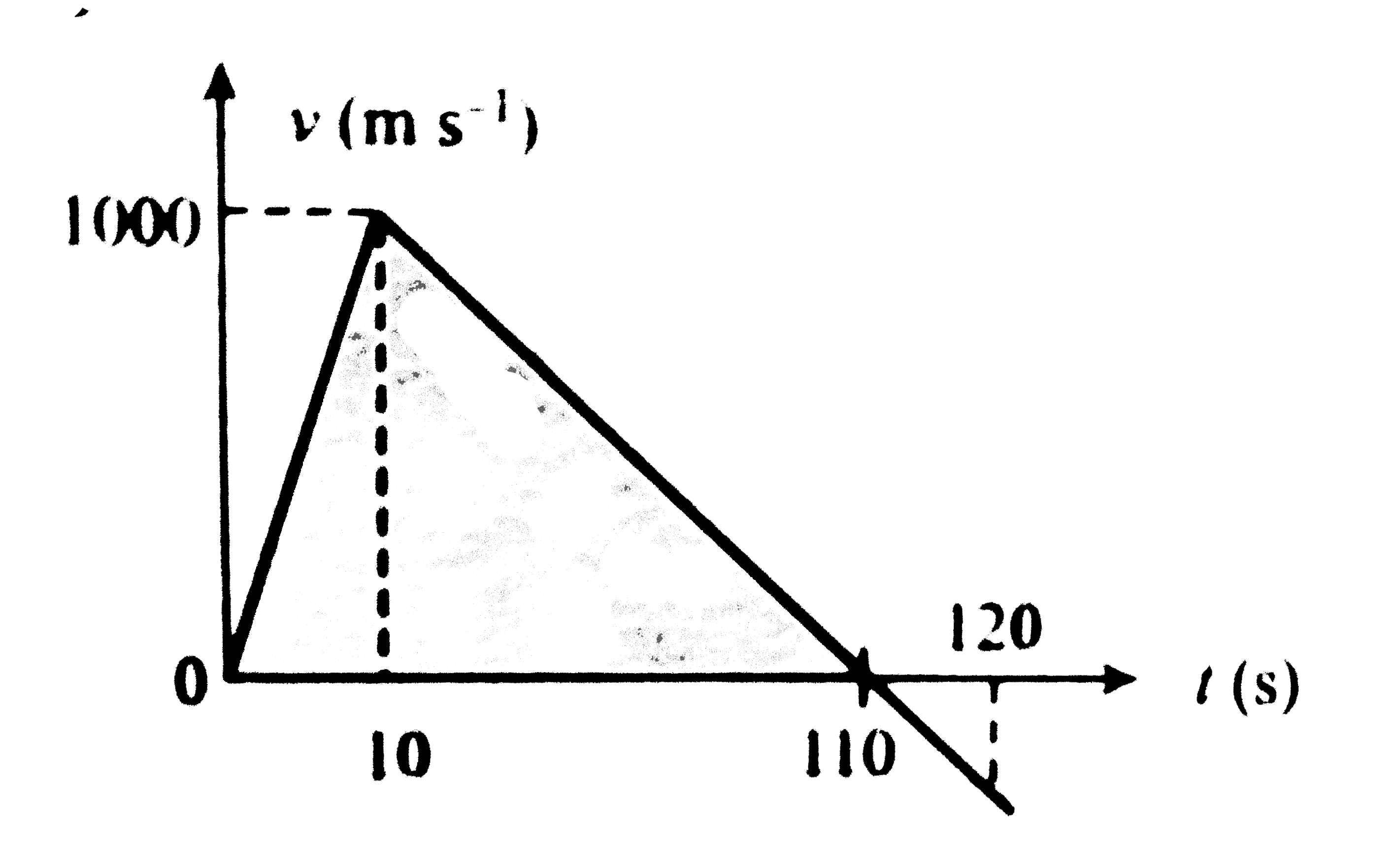A rocket is moving up with a velocity υ if the velocity of this rocket is suddenly tripled, what will be the ratio of two kinetic energies ?
To solve the problem of finding the ratio of the kinetic energies of a rocket moving with an initial velocity v and then tripled to 3v, we will follow these steps:
Step 1: Write down the formula for kinetic energy
The formula for kinetic energy (KE) is given by:
KE=12mv2
where m is the mass of the object and v is its velocity.
Step 2: Define the initial and final velocities
Let the initial velocity of the rocket be v1=v.
When the velocity is tripled, the final velocity will be:
v2=3v
Step 3: Calculate the initial kinetic energy
Using the initial velocity v1:
KE1=12mv21=12mv2
Step 4: Calculate the final kinetic energy
Using the final velocity v2:
KE2=12mv22=12m(3v)2=12m(9v2)=92mv2
Step 5: Find the ratio of the two kinetic energies
Now, we need to find the ratio of the initial kinetic energy to the final kinetic energy:
Ratio=KE1KE2=12mv292mv2
Step 6: Simplify the ratio
The mass m and the 12 cancels out:
Ratio=v29v2=19
Step 7: Express the ratio in the required form
Thus, the ratio of the two kinetic energies can be expressed as:
KE1:KE2=1:9
Final Answer
The ratio of the two kinetic energies is 1:9.
---
The formula for kinetic energy (KE) is given by:
KE=12mv2
where m is the mass of the object and v is its velocity.
Let the initial velocity of the rocket be v1=v.
When the velocity is tripled, the final velocity will be:
v2=3v
Using the initial velocity v1:
KE1=12mv21=12mv2
Using the final velocity v2:
KE2=12mv22=12m(3v)2=12m(9v2)=92mv2
Now, we need to find the ratio of the initial kinetic energy to the final kinetic energy:
Ratio=KE1KE2=12mv292mv2
The mass m and the 12 cancels out:
Ratio=v29v2=19
Thus, the ratio of the two kinetic energies can be expressed as:
KE1:KE2=1:9
The ratio of the two kinetic energies is 1:9.
Topper's Solved these Questions
- BOOK - NCERT EXEMPLAR ENGLISHCHAPTER - WORK AND ENERGYEXERCISE - LONG ANSWER TYPE QUESTIONS8videos
WORK AND ENERGY
- BOOK - NCERT EXEMPLAR ENGLISHCHAPTER - WORK AND ENERGYEXERCISE - LONG ANSWER TYPE QUESTIONS8videos
WORK AND ENERGY
- BOOK - NCERT EXEMPLAR ENGLISHCHAPTER - SOUNDEXERCISE - Long Answer Type Questions3videos
SOUND
Similar Questions
A body is thrown vertically up with certain initial velocity, the potential and kinetic energies of the body are equal is thrown with double the velocity upwards, the ratio of potential and kinetic energies upwards, the ratio of potential and kinetic energies of the body when it crosses the same point, is
View SolutionThe kinetic energy of an object of mass m moving with a velocity of 5 m//s is 25 J. What will be its kinetic energy when its velocity is doubled ? What will be its kinetic energy - when its velocity si increased three times ?
View SolutionA body of mass 10 kg is moving with a velocity of 20 m s−1 . If the mass of the body is doubled and its velocity is halved, find : (i) the initial kinetic energy, and (ii) the final kinetic energy
View SolutionIn the previous question, the mean velocity of the rocket reaching the maximum height is :
View SolutionTwo bodies of equal masses are moving with uniform velocities v and 2v. Find the ratio of their kinetic energies
View SolutionA Rocket having initial mass 5×106kg , which include mass of fuel of mass 4×106kg is ejecting gas with velocity 4000m/s relative to Rocket. Then what will be the velocity of rocket when entire fuel finishes?
View SolutionThe follwing graph shows the variation of velocity of a rocker with time. Then the mximum height attained by the rocket is.
 .View Solution
.View SolutionAn object of mass 15kg is moving with a uniform velocity of 4m/s. what is the kinetic energy possessed by the object ?
View SolutionDeduce an expression for the minimum velocity with which a rocket must be fired to escape earth's gravitational field.
View SolutionThe first ball of mass m moving with the velocity υ collides head on with the second ball of mass m at rest. If the coefficient of restitution is e, then the ratio of the velocities of the first and the second ball after the collision is
View Solution

